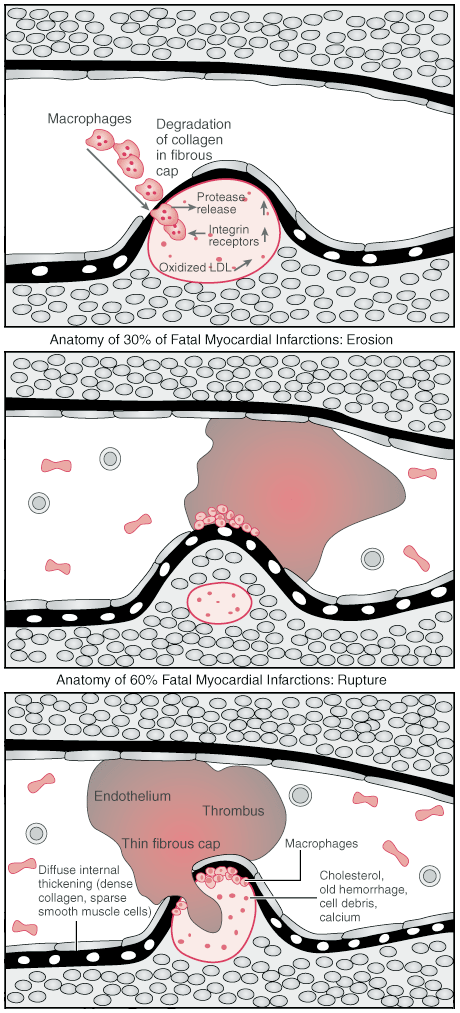 |
 |
Figure 50-4
Mechanisms by which atherosclerotic plaques become ulcerated
(bottom) or fissured (middle).
Top, Inflammation that occurs in selected portions of some atherosclerotic
plaques. Plaque fissuring or ulceration appears to be at least sometimes related
to metalloproteinase release from macrophages present under the thin fibrous cap
(top) or on its surface (middle).
Release of metalloproteinases degrades collagen in the fibrous cap and causes it
to ulcerate or fissure, thereby leading to platelet adhesion, aggregation, and growth
of a thrombus (bottom). Typically, atherosclerotic
plaque that ulcerates has a thin fibrous cap, a large number of inflammatory cells
immediately beneath the cap, and an adjacent lipid pool (top
and bottom). Atherosclerotic plaque that fissures
generally has a thicker cap, a smaller number of inflammatory cells on the surface
of the cap, and a smaller adjacent lipid pool (middle).
LDL, low-density lipoprotein. (Redrawn from Willerson JT, Cohen J [eds]:
Cardiovascular Medicine, 2nd ed. New York, Churchill Livingstone, 2000.)

 |
